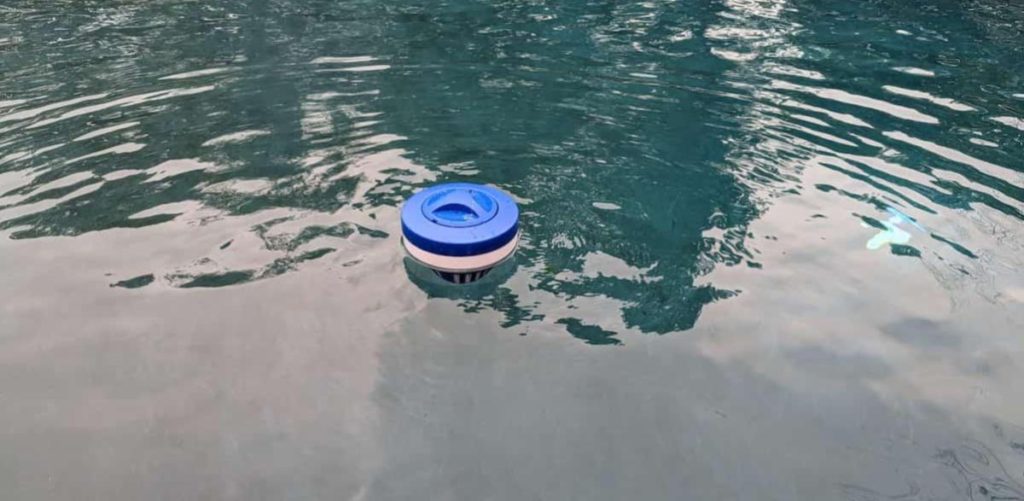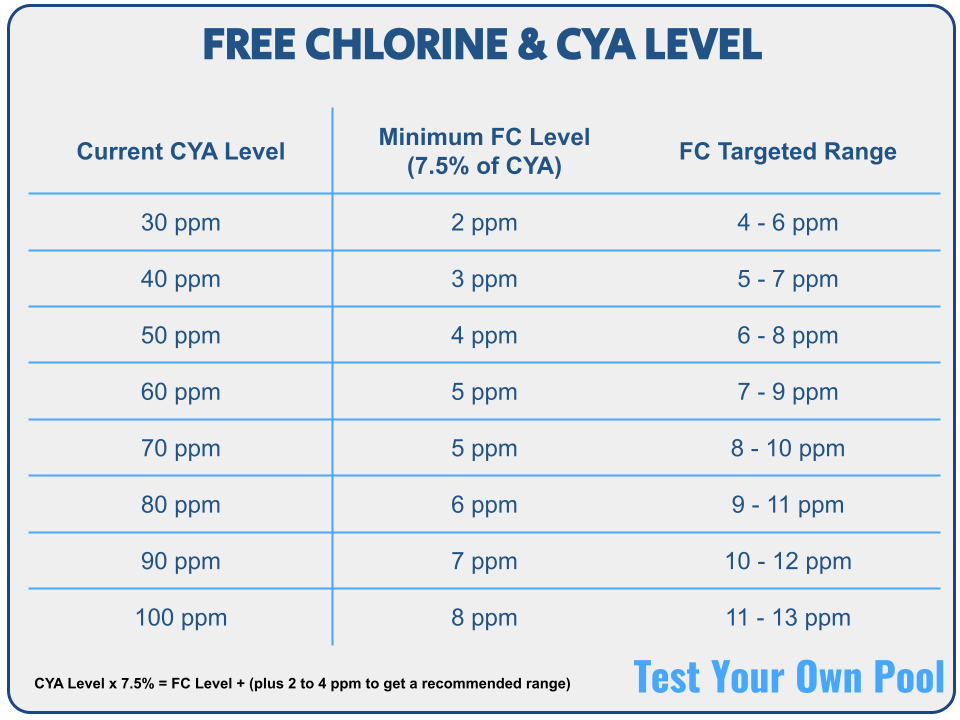Cyanuric acid, CYA for short, stabilizes chlorine and protects chlorine from the sun’s ultraviolet rays. This helps keep the pool sanitized and chlorine last a bit longer.
Over time, CYA levels may get too high, leading to algae growth and other water issues.
Cyanuric acid levels should be between 30 and 60 PPM (you can afford to be higher if you have a saltwater pool). You’ll need to lower CYA in the pool if it gets too high.
How to Lower Cyanuric Acid
Draining the pool and refilling it with fresh water is the most effective way to lower CYA. Unlike chlorine and other chemicals, CYA stays in the water and doesnt get evaporated or “used up.” It must be physically removed.
You may see CYA reducers or other chemicals that claim to lower cyanuric acid levels, but those are largely ineffective. To be completely honest, they are a waste of time and money and should not be used.
Preventative measures should be taken to ensure that CYA levels don’t get too high. The type of chlorine used has a big part in that. Liquid chlorine, cal hypo, and lithium hypochlorite are unstabilized, meaning they do not contain CYA.
If you use trichlor or dichlor daily, understand these are stabilized which means they contain CYA.
Test your CYA levels weekly to ensure they are still at the recommended levels. An accurate and reliable pool testing kit will help ensure CYA never gets out of control.
The most accurate and reliable pool testing kit.
Type of Chlorine Test: FAS-DPD
Read our full Taylor K-2006 Review.
What Causes Cyanuric Acid to Get So High?
Unlike chlorine, CYA is never “used up.” Once added to the pool water, it will remain in the water.
You may be adding cyanuric acid without even realizing you are doing it!
Use of Chlorine Tablets
Chlorine tablets like trichlor and dichlor are among the most popular types of chlorine for pool owners to use due to their convenience to “set it and forget it”.

However, they are referred to as stabilized chlorine, which contains cyanuric acid as an ingredient and bonding agent. When used frequently or in large quantities, the CYA in these products accumulates in the pool water.
This buildup is gradual, and pool owners may not notice the increase in CYA levels until they become problematic. Generally, every 1 ppm of chlorine added with pucks increases cyanuric acid levels by 0.6 ppm.
When using tablets, it’s essential to understand their composition to manage the addition of cyanuric acid levels.
Water Evaporation
Losing pool water to evaporation is very common. Pools can naturally lose water every day.
However, as that water evaporates, cyanuric acid stays behind, which adds to a higher concentration in the water.
Not Enough Testing
Inconsistent pool testing contributes to the causes of cya in pools. The two scenarios above are things hundreds of thousands of pool owners use or deal with daily.
Without regular water chemistry testing, pool owners may be unaware of the increasing levels of CYA.
What Happens if CYA is Too High?
High CYA levels in a pool are not directly dangerous, but they can create less sanitary water conditions.
For example, High CYA levels can reduce the effectiveness of chlorine, making it much harder to keep the pool clear of bacteria and algae. This forces you to use even more chlorine.
This is known in the pool industry as chlorine lock, which is essentially the more CYA in the pool, the more chlorine that needs to be used.
For your free chlorine (FC) levels to be effective, you need 7.5% of the CYA level to be FC. For example, if you have a CYA of 30 in the pool, you need a minimum of 2 ppm FC. I like adding about 2 to 4 ppm in the range to ensure I never go under, so a CYA of 30 ppm should have 4 to 6 ppm of FC.
To check what FC range you should be in, plug in the current CYA of your pool:
Free Chlorine & CYA Levels
You can also refer to this chart for a full overview of the FC and CYA levels:

Say “C-Ya” to High CYA!
Keeping an eye on CYA levels is an essential aspect of pool maintenance.
It may seem overkill, but a simple weekly to monthly check of CYA will ensure you never stray too far over recommended levels.

